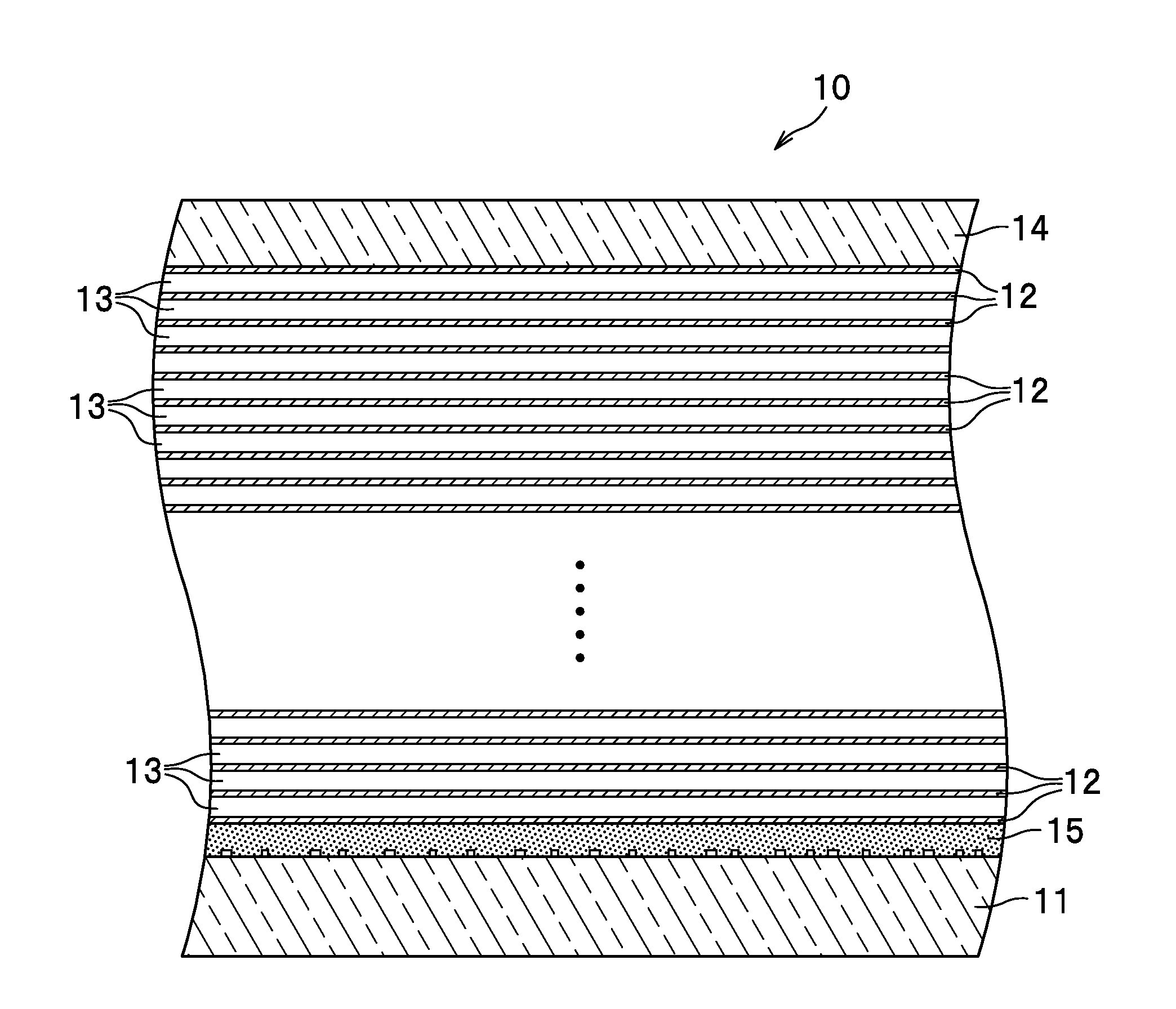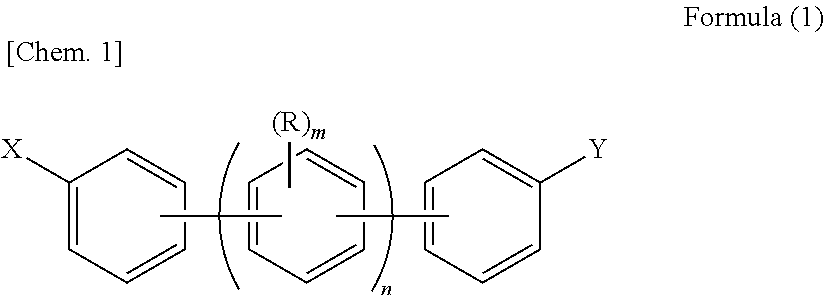Optical information recording medium and optical information recording method
a technology of optical information and recording medium, which is applied in the direction of optical recording/reproducing/erasing methods, mechanical recording, instruments, etc., can solve the problems of large loss of recording beam, and achieve the effect of easily deleting information and even erasing information recorded
- Summary
- Abstract
- Description
- Claims
- Application Information
AI Technical Summary
Benefits of technology
Problems solved by technology
Method used
Image
Examples
example 1
1. Recording Material
[0073]The following materials are used for preparing a recording material:
[0074]
Solventmethyl ethyl ketone (MEK)7.0gTwo-photon absorption dyefollowing compound D-170mg[Chem. 3] D-1One-photon absorption dyefollowing azo-metal complex dyesM-1115mg[Chem. 4]Polymer binderpolyvinyl acetate manufactured by Across Co., Ltd.500mg(Molecular weight Mw: 101600)
[0075]The synthesis process for the above M-11 will be briefly described. Azo-metal complex dyes (M-11) is made from the following azo dyes (L-11).
[0076]
[Synthesis of Compound (M-11)]
[0077]120 g of compound (L-11) and 1200 ml of methanol were put into a 3-1 three-necked flask, and 193 ml of diisopropylamine was added thereto dropwise with stirring. After complete dissolution of the mixture, 82.3 g of cupric acetate monohydrate was further added with stirring and reacted at a temperature of 60 to 65° C. for 2 hours. The mixture was cooled to the room temperature and subjected to filtration to isolate the precipitates...
PUM
| Property | Measurement | Unit |
|---|---|---|
| size | aaaaa | aaaaa |
| thickness | aaaaa | aaaaa |
| thickness | aaaaa | aaaaa |
Abstract
Description
Claims
Application Information
 Login to View More
Login to View More - R&D
- Intellectual Property
- Life Sciences
- Materials
- Tech Scout
- Unparalleled Data Quality
- Higher Quality Content
- 60% Fewer Hallucinations
Browse by: Latest US Patents, China's latest patents, Technical Efficacy Thesaurus, Application Domain, Technology Topic, Popular Technical Reports.
© 2025 PatSnap. All rights reserved.Legal|Privacy policy|Modern Slavery Act Transparency Statement|Sitemap|About US| Contact US: help@patsnap.com



